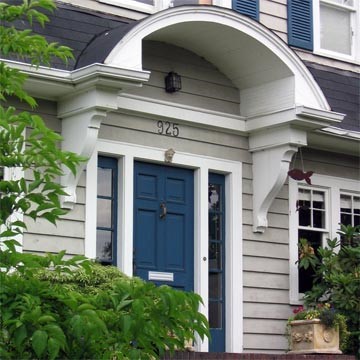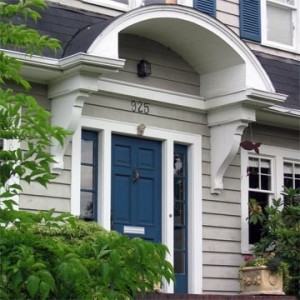When shopping for a private real estate loan a borrower should be as selective in…

The Rewards and Pit-Falls of being a “Rehabber”
The biggest reward for rehabbing a property is the profit, the satisfaction of a job well done, and the contribution you make to a neighborhood. However; from the point of purchase, through the renovation phase, to closing a sale, the rehabber assumes risks that may result in less than expected profit or even a significant loss. Whether you intend to flip the property or rent it out, success can be achieved as long as you don’t make the following mistakes.
Wrong Property
Selecting the correct property is key to having a successful rehab project. The ideal property for a rehab is one that just needs cosmetic fixes that can be made quickly and at a reasonable cost. Example of these items include, paint, carpeting, floor refinishing, updating of hardware and fixtures. The most costly elements of a property to repair or replace include the foundation, electrical, plumbing and roof. If more than one or two of these need major repair or replacement, the eventual sales price of the property may not justify the time and expense. It is better to move on to a better rehab candidate. Finding a property that is undervalued due to its appearance and cosmetic issues, but has “good bones”, is the ideal subject for rehab.
Also as the old adage states: “success in real estate is location, location, location”. The location has a large impact on the value of a property and therefore should be substantial part of the purchase decision. Is the value of the property negatively impacted by a busy street, or proximity to schools, businesses, and churches? Is there poor access to the property due to a one way street, a badly placed driveway or lack of available parking? On the positive side does the property have a view, quite street, easy access to shopping or public transportation? If a property does require extensive work, a great location will provide a handsome return from the extra time and money spent.
Wrong Price
Even if the property itself seems like a good fixer candidate, you need to crunch the numbers to increase the chance of a successful outcome. Whether you are buying to sell or rent; create a budget for the project. Be sure to include the purchase price, all loan fees/interest, insurance, taxes, utilities and a conservative rehab budget for the property. The biggest mistake you can make is paying too much for the property. If the price your can purchase the property doesn’t make financial sense today, it is a poor bet to assume that the upward trend in home prices, over the time it takes to rehab the property, will bale you out.
Not Allowing for Cost Over-runs
Ninety nine percent of the time, there will be unexpected costs that will impact the final cost of the project. During your inspection you are not going to be able to see every square inch of the building and inevitably there will be additional issues that arise. Successful rehabbers will spend the time and effort to understand the potential scope of the work and are not afraid to call in contractors with more experience in specific areas. All rehab budgets should have at least a 5%- 10% contingency to cover unexpected costs.
Wrong Timeline Estimate
In addition to the unforeseen costs, unforeseen circumstances may arise and make your timeline longer than expected. This can be due to extra work that needs to be done to the property, or the time it takes to obtain a permit. Many times it is attributed to scheduling challenges with your contractors or even working with your own schedule to balance the other demands on your time outside the project. Also, your property may take longer to sell or rent than originally expected. Underestimating your timeline will increase the amount of interest you will pay on your loan. Typically Lenders require an extension fee to buy more time. At the start a six month loan maturity may seem like plenty of time, but there is a high probability of time delays. You can protect yourself against additional loan costs by choosing a Lender that offers a 12 month term priced at the same interest rate and loan fee of a 6 month term. Avoid extension fees and of course default interest!
Over Improving Property
When rehabbing, you are not creating your dream home, an architectural master piece or a monument to yourself. You are improving a property for investment purposes with the goal maximizing your profit from the sale. Any extra improvements should increase the property value (eventual sales price) by more than its cost both in money and time. Be careful not to overspend on items like light fixtures, hardware and faucets that the eventual buyer may immediately replace with items that are more suited to their preference and personal style. With that said you shouldn’t cut corners, hide defects, or accept shoddy work!
Decide if you improving the property for sale or for rent. Improving a rental property dictates a different and sometimes lower cost level of finish than if you are improving property for immediate sale. Know your intended use of the property before you establish your rehab budget.
Pricing Too High
Once all of the improvements are completed, make sure to list the property at an asking price comparable to sales prices to similar houses in the neighborhood. If you do your homework you will know the market value of like type properties in the neighborhood before your offer to purchase the property. Also remember it is the price of homes that have actually sold that you want to focus on, not the asking price. In today’s market some homes are bid up well above the asking price and other homes are sold at less than asking price. The price of closed sales determines the market.
It is never good for a property to be for sale too long due to an unreasonably high asking price. This will deter real estate agents and buyers from even showing/looking at the property. Pricing too high can only result in higher holding costs – interest, taxes, and insurance. Overpricing can result in a lower sales price than pricing the property correctly to begin with.
Purchasing and upgrading a “fixer” adds value -equity/profit. Whether you engage full time or look finad an opportunity as an additional source of building wealth you will be required to “wear many hats” to be successful. We trust that above information and reminders will contribute to your success!

